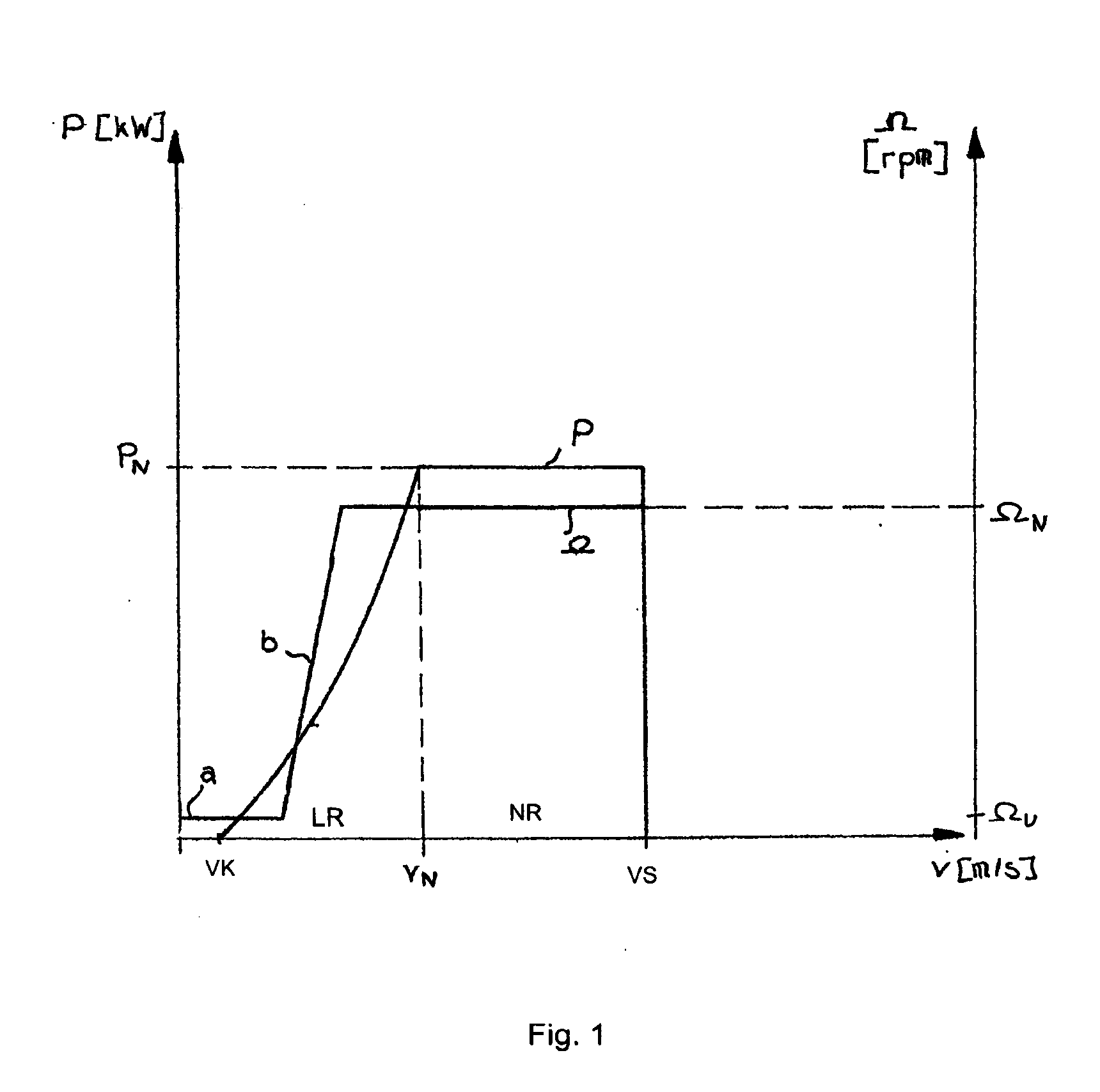Method for controlling a wind power plant and corresponding wind power plant
a technology of wind power plant and control method, which is applied in the direction of electric generator control, variable speed operation control, rotor control, etc., can solve the problems of excessive problem of converting the regulation of wind power plant in the upper partial load range as a function of measured wind speed, subjecting the wind power plant to high loads, and achieving improved grid compatibility and reliability.
- Summary
- Abstract
- Description
- Claims
- Application Information
AI Technical Summary
Benefits of technology
Problems solved by technology
Method used
Image
Examples
Embodiment Construction
[0084]FIG. 1 already was discussed above in relation to the state of the art and need not be elucidated again here.
[0085]FIG. 2 also was discussed above in relation to the state of the art and needs only a few more comments below.
[0086] In its lower partial-load range LR, FIG. 2 shows in solid lines a rotor-speed characteristic curve such as would attain optimal power output in a limited and predetermined rotor-speed range between Ωu and ΩN. Conventionally, regulation is implemented by a PI or a PID control acting on the generator torque as a function of rotor speed to attain the rotor-speed ramp for operation at an optimal high operating rate. Alternatively and as already mentioned above, to attain an especially simple control algorithm, a simple relation between rotor speed and torque, for instance a tabular function, may be defined. Illustratively such a fixed rotor-speed / torque characteristic curve would lead to the dashed rotor-speed characteristic curve. The horizontal plate...
PUM
 Login to View More
Login to View More Abstract
Description
Claims
Application Information
 Login to View More
Login to View More - R&D
- Intellectual Property
- Life Sciences
- Materials
- Tech Scout
- Unparalleled Data Quality
- Higher Quality Content
- 60% Fewer Hallucinations
Browse by: Latest US Patents, China's latest patents, Technical Efficacy Thesaurus, Application Domain, Technology Topic, Popular Technical Reports.
© 2025 PatSnap. All rights reserved.Legal|Privacy policy|Modern Slavery Act Transparency Statement|Sitemap|About US| Contact US: help@patsnap.com



